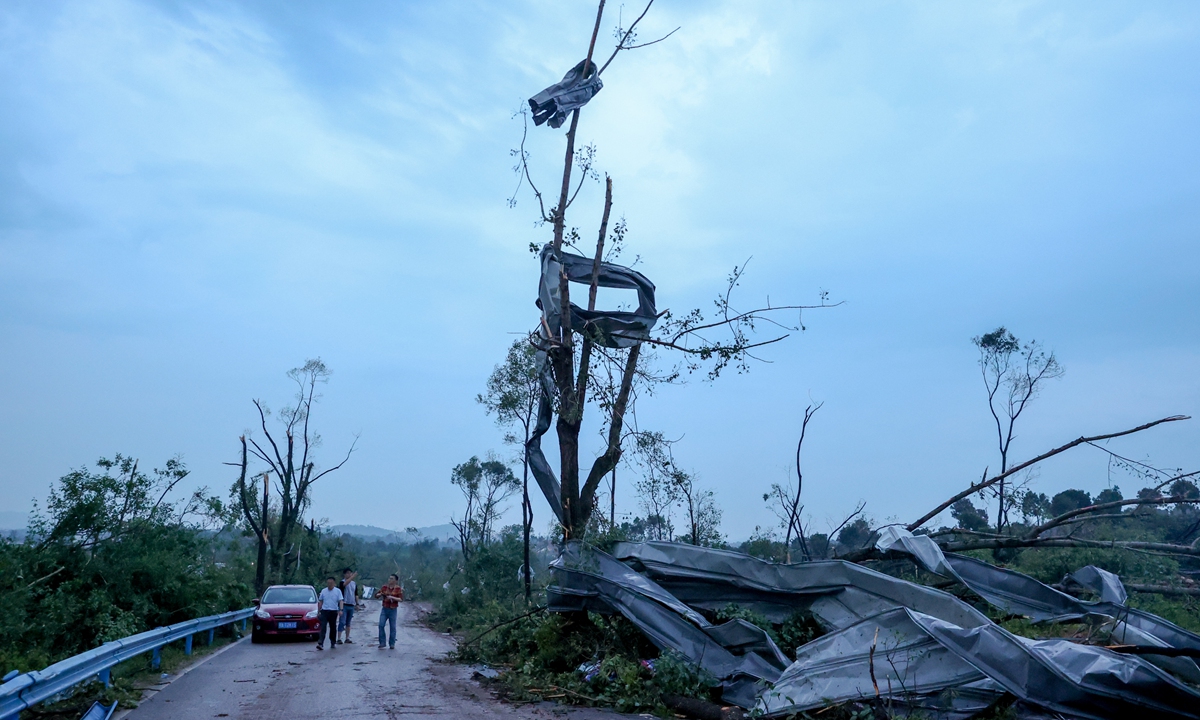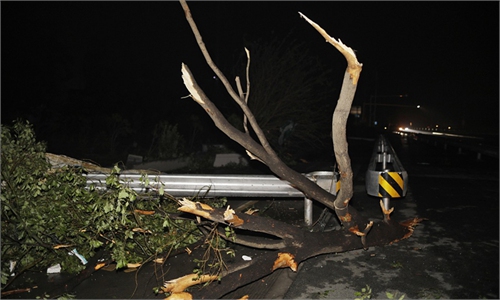
A magnitude-9 tornado broke out in Central China's Wuhan's Caidian district on Friday, damaging some houses in the village, breaking a large number of trees and collapsing some sheds. Photo: VCG
China's emergency management authorities dispatched working groups and provided guidance to multiple regions that saw disasters over the weekend caused by convective weather, including tornadoes and hailstorms that have caused casualties and property losses.
Two groups were sent by the Ministry of Emergency Management and flood control authorities to Central China's Hubei Province and East China's Jiangsu Province on Saturday to supervise the prevention and control work after two tornadoes hit Hubei's Wuhan and Jiangsu's Suzhou on Friday night, causing 12 deaths and 379 injuries, and affecting thousands of people.
Regional emergency response authorities in places including Anhui and Zhejiang, Southwest China's Sichuan and Guizhou provinces, and South China's Guangdong Province received guidance through a video conference to cope with the heavy rain and strong winds, which the meteorological center alerted them to on Saturday.
China has seen unusual convective weather this year, which has happened more frequently and with stronger effect, Zhang Tao, chief forecaster of the National Meteorological Center, was quoted as saying in an interview with China Meteorological News.
He explained that strong convective weather is caused by an unstable formation of a cold upper layer and a warm lower layer in the atmosphere, and its intensity usually brings heavier wind and rain, and is more likely to bring hailstorms.
Tornadoes, as an extreme weather phenomenon of strong convection, are not as common as other such weather features in China, but they occur almost every year, Wang Gengchen, a research fellow at the Institute of Atmospheric Physics of the Chinese Academy of Sciences, told the Global Times on Sunday.
"Tornadoes occur as long as the formative conditions meet, regardless of whether they are coastal or inland," he said.
He noted that forecasting tornadoes is very difficult, due to their small range and short duration.
"We can only passively make a response by having people quickly leave the areas to be affected by tornadoes, as they are extremely strong and the authorities have a really short time to prepare after the radar signal issues a warning," he said.
Tornadoes usually occur during spring and summer in China and are commonly seen in the middle and lower reaches of the Yangtze River, experts said.
Jiangsu and Hubei, where Friday's tornadoes struck, are among the places that see most the tornadoes in China, with frequencies of 2.5 to 5.5 times annually.
Suzhou was severely struck by a waterspout in July 2004, with a water column of nearly 30 meters in diameter, lifting the water of the local Yangcheng Lake 30 meters high for nearly 20 minutes.
In Jiangmen, Guangdong, a tornado in April 2012 swept through 22 factories covering a total area of more than 23,000 square meters.

